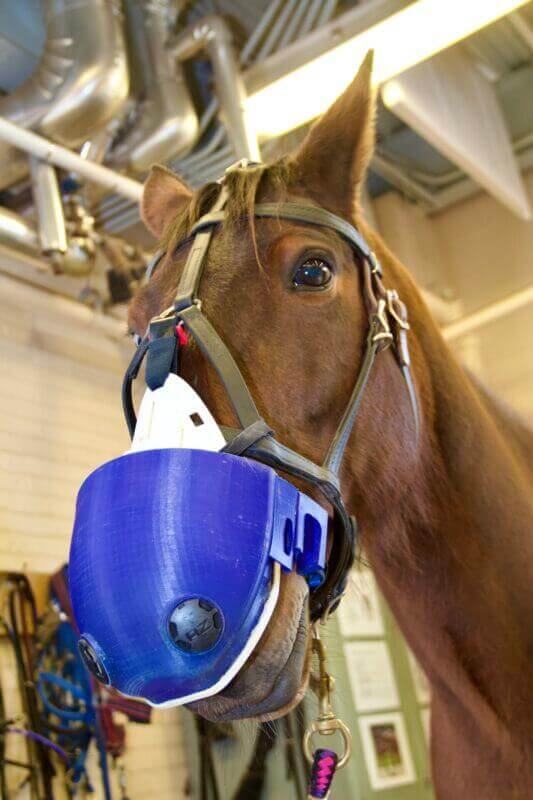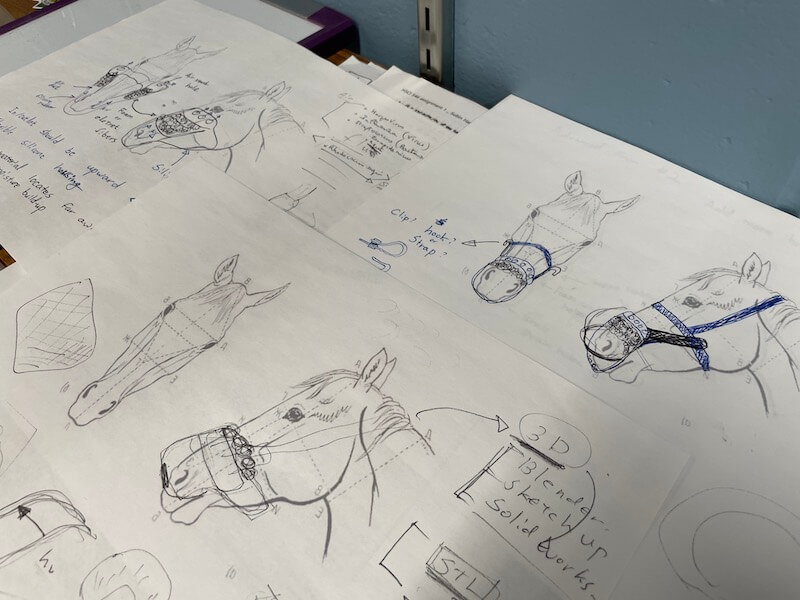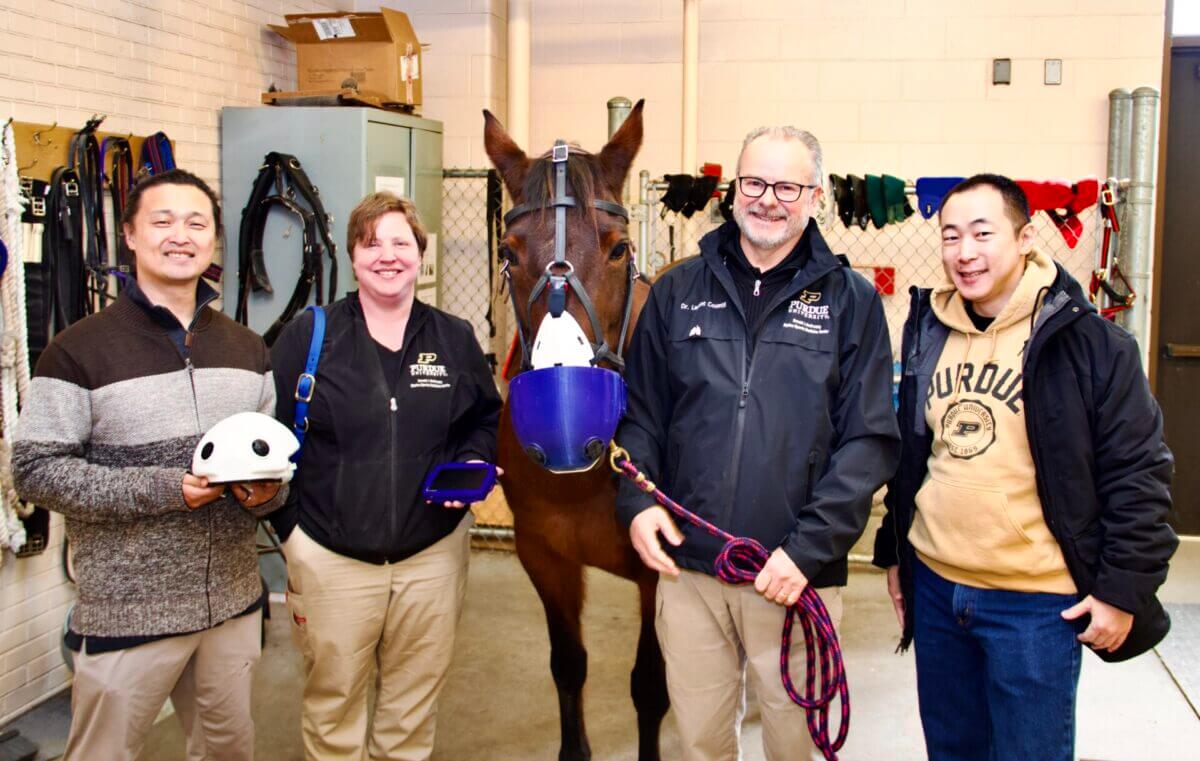A collaboration between the Purdue University School of Health Sciences and the Purdue College of Veterinary Medicine will enable horses to breathe easier. In turn, their human owners will too.
Chang Geun Lee, a PhD candidate in Health Sciences, and Jae Hong Park, PhD, associate professor of Health Sciences, teamed up with Dr. Laurent Couëtil, professor of Large Animal Internal Medicine, to assist asthmatic horses. According to Couëtil, most horses in the United States have some degree of asthma while 14% have severe asthma. These asthma attacks can significantly impact the overall health of the animal.
Park’s success in researching and developing human respirators, namely for welders in manufacturing facilities, caught the attention of Couëtil some years ago. In 2020, he wondered if Park could develop something similar for horses. The project gained momentum after Lee joined Park’s lab. With a background in mechanical engineering and experience as an engineer and designer in the industry, Lee brought valuable skills to the team. Months of work later, the researchers created an equine respirator that fits snugly on a bridle.

The team disclosed the innovation to the Purdue Innovates Office of Technology Commercialization and it is currently optioned by an industry partner looking to bring the innovation to market.
“We have been working to protect human health, but humans are not the only creatures, not the only living things in the world. We have to protect animals as well, because we love animals,” Lee explained. “We are living together in this nature. So, I’m excited to use my skills and knowledge to protect the animals as well.”
Making the horse respirator was not easy because it had to meet different needs than a human one. It couldn’t cover the mouth, since horses need to eat and drink freely, and it only needed to cover the nose. After kicking around “hundreds” of ideas, seven different prototypes were 3-D printed and assembled to fit different breeds of horses. A soft silicone seal helps the respirator stay in place and a foam filter greatly reduces dust and other particles that harm the animal’s lungs. The 3-D printed plastic is flexible for a comfortable fit around the horse’s nose and upper lip.
Two one-way valves are found on each respirator at the horse’s nostrils for exhaling. Fresh air comes in through a filter on the upper part of the respirator across the bridge of the horse’s muzzle.
The researchers put the animals through various activities throughout testing — drinking and eating were especially monitored. Sensors were fit into the respirators to measure particulate concentration inside the respirator and outside of it.
The animals eventually get used to wearing the devices. “Horses can go about their normal life and wear this 24/7, which is really what the goal is here,” Couëtil said.
Hey, hay!
The most common irritant for a horse’s asthma often occurs when eating. Most horses eat hay, which contains dust and other harmful particles that get inhaled through the horse’s nostrils while it takes a bite.
Some horse owners and trainers invest in a hay steaming technology that washes dust from the hay, but the equipment can cost thousands. Other owners feed hay pellets to their horses, but pellets can affect the gut health of the animals.
“(The respirator) was an elegant solution so you don’t have to use medications all the time — drugs that are expensive but also can have some side effects,” Couëtil warned.
Park was happy to report that the horse respirator design has been patented. Couëtil has started the process of contacting companies that may want to invest in the new respirators.
“We are working with a company that makes some other devices that treat horses like, for example, nebulizers,” Couëtil said. “So, they are currently evaluating the device and trying to see if commercialization of the device would be possible. They obviously know the market very well. It would be nice to share this as a product that people can buy.”

One Health
The College of Health and Human Sciences and the College of Veterinary Medicine are key players in Purdue University’s One Health strategic initiative, and the respirator research project is a shining example of interdisciplinary research teams working together to “tackle complex challenges with real-world impact at the intersection of human, animal and plant health.”
Park’s lab is deeply involved in this initiative through active collaborations with other colleges on campus. In a new project examining air quality on hog farms, he has teamed up with Jiqin Ni, professor of agricultural and biological engineering, and Brian Richert, associate professor of animal sciences. Together, they developed an environmental monitoring station to measure airborne particles in swine barns, another effort that helps protect both people and animals.
As an aerosol scientist, Park’s research into airborne pollutants is no longer limited to human applications. Thanks to the One Health framework, it now extends to the well-being of animals and the environment as well.
“The Purdue One Health initiative includes human health, animal health and the environment. All of these are connected,” Park said. “I’m very happy to help animals and humans and improve the environment.”

